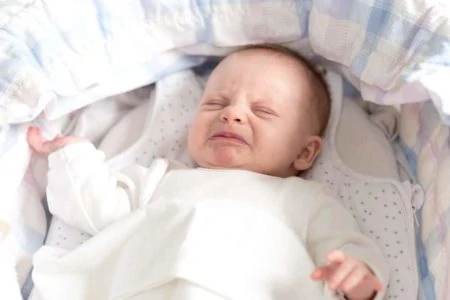Has your sweet baby turned into a toddler who communicates solely through high-pitched, nasal groans? That sound is comparable to nails scraping on a chalkboard, and it can drain your patience instantly. You are likely wondering how to stop a whining child before you lose your cool.
You are not alone. Almost every parent faces this irritating phase. It is frustrating, but once the cycle starts, it can be difficult to break without a plan.
We analyzed child development strategies to find the best methods for restoring peace. Here is how you can help your child communicate effectively and stop the whining for good.
Key Takeaways
- Toddlers often whine due to limited vocabulary, frustration, or physical needs like hunger.
- Teaching sign language and “yes/no” nodding bridges the gap before speech develops.
- Consistency is vital; giving in to a whine reinforces the behavior as a successful tactic.
- Encouraging a “strong voice” helps older children regulate their emotional expression.
Understanding Why Toddlers Whine
This developmental stage is a challenge for both you and your child. Since they cannot talk or communicate complex thoughts yet, you have to act like a detective to figure out what is wrong.
It is typical for a child to have around six words by 18 months and 50 words by age two. However, the ability to form complete sentences and have real conversations often does not happen until age three. Even then, strangers may only understand about 70% of their speech. Because of this gap between what they want and what they can say, toddlers get frustrated quickly. You can read more here on age-appropriate speech milestones.
Patience is essential. When you understand the trigger, you can remove the stressor and teach them a better way to ask for help.
Frustration Triggers the Noise
Your toddler is learning independence. When everything goes smoothly, they are happy. But this mood changes instantly when things do not go according to their plan.
Imagine trying to fit a square peg in a round hole. They know it is not working, but they cannot figure out why.
Perhaps they are trying to dress a doll, but the clothes won’t fit. Or maybe they are building a tower out of blocks that keeps toppling over.
Their reality is failing to meet their expectations. This leads to anger, confusion, and temper tantrums. Whining is the soundtrack to that frustration.
In addition to what parents tell me occurs at home, in the car, at stores, etc., I often witness such outbursts during office visits. Coupled with stranger anxiety and the fear of getting a vaccine, the toddler cries or screams throughout much of the visit. Those with more advanced speech skills tend to be calmer and attempt to communicate with me while being examined.
Editor's Note:
Dr. Leah Alexander, MD, FAAPManaging Frustration Levels
It is normal for a child to fail when they play independently. Sometimes they solve the problem, but often the frustration peaks, and the whining begins.
Check if their toys are too advanced for their current skills. If so, swap them for something age-appropriate.
For example, replace unstable wooden blocks with larger interlocking ones. Their fine motor skills still get a workout, but the tower stays up. Swap the doll with complex buttons for one with a velcro diaper.
Once they master simpler tasks, reintroduce the complex toys a few weeks later. Try this when your toddler is well-rested and fed. They are much more patient when they aren’t battling hunger or fatigue.
If the whining persists, sit down and help them achieve their goal. Alternatively, switch the environment. Go for outdoor play or try reading together to hit the reset button.
The AAP offers additional advice and explanations of toddler behaviors.
Validating Feelings Without Giving In
Sometimes you cannot fix the problem. You might be stuck in a doctor’s waiting room when your child gets bored and starts whining.
In these moments, validate their feelings. Tell them, “I know you are bored. I don’t like waiting either.” Explain why you are there and that it will be over soon. This teaches your child that sometimes we have to do things we do not enjoy.
Teaching a toddler to cope with reality is tough but necessary. You should not always give them what they want just to stop the noise.
If they whine because they want a specific chocolate cookie but you only have oatmeal, do not cave in. Offer the available choice. If they whine, sympathize, but hold your ground. This teaches them that whining does not change the outcome.
Parents are often frustrated about tantrums or outbursts that occur in public places. I frequently hear them express embarrassment when their child drops to the floor and screams in a store or restaurant. My usual advice is for a parent or responsible adult to take the child back to the car until the tantrum has resolved. The child is able to express their frustration, and the parent avoids unpleasant looks and comments from those witnessing the episode. Once the child is calm again, the store or restaurant visit can resume.
Editor's Note:
Dr. Leah Alexander, MD, FAAPTeaching Better Ways to Communicate
Until now, your little one communicated needs by crying. Whether they needed comfort, food, or a diaper change, you responded to the noise. Since they haven’t learned to talk yet, whining feels like the next logical step to them.
Bridge the gap with other forms of communication. Sign language and pointing are excellent tools.
When you say a word, use a sign for it. This helps them adopt a physical way to ask for things, reducing the need to whine (1).
Teaching “yes” and “no” nods is also effective. When you offer a drink, ask, “Do you want this?” If they push it away, say, “No drink,” and shake your head. If they grab it, say, “Yes, drink,” and nod. Eventually, they will nod or shake their head instead of whining.
In clinical practice, I have seen the ability to communicate “no” by shaking the head as young as 9 months old. One very surprising but funny case of this was during my discussion of a flu vaccine for a 1-year-old. He had not vocalized much throughout the entire office visit, only crying when I examined his ears and mouth. After I explained the vaccine details to his parents, I asked if they would like him to get the flu vaccine. Before the parents could answer, this very intuitive toddler shook his head “no.”
Editor's Note:
Dr. Leah Alexander, MD, FAAPSetting Boundaries Early
Toddlers are constantly testing what works. It is a game of trial and error.
Set clear boundaries. If you give in to whining, you teach them that it is an acceptable currency to buy what they want.
It is difficult to listen to the sound, but you must prioritize their long-term communication skills. Prevent triggers by ensuring they are fed, rested, and playing with appropriate toys.
Check your own reaction. Whining is annoying, but if you snap or cave in, you lose the teaching moment.
Common Triggers for Older Children
As your toddler grows and learns to speak, communication improves. However, whining may still peak between ages two and four.
While it is natural to feel annoyed, shouting “Stop whining!” rarely works. Empathy and consistency yield better results.
Your child is gaining independence and testing boundaries. Here is why they might still be whining (2):
- Seeking Attention: Just like crying worked as a baby, they know whining gets you to look at them. They may be bored, hungry, or simply needing eye contact.
- Needing Connection: Your child might crave one-on-one time. They may want you to put down your phone and play, read, or cuddle.
- Mirroring Your Mood: Children are emotional sponges. If the home environment is stressful or you are anxious, they may whine in reaction to that tension.
- Expressing Big Emotions: Whining can be a sign of disappointment or sadness. They may feel overwhelmed and need your help to regulate their emotions.
- Temperament: Some children are naturally more sensitive or intense (3). They may whine as a coping mechanism for changes in their routine.
- Inconsistent Reinforcement: If you say “no” three times but say “yes” the fourth time because you are tired of the noise, you teach them that persistence pays off. Consistency among all caregivers (parents, nannies, grandparents) is crucial to stopping the habit.
Actionable Steps to Stop Whining
You can break the cycle with a few consistent strategies. The most important rule is to stay calm. Take a deep breath and do not let them see that the noise is irritating you.
The “I Can’t Hear You” Technique
A gentle way to correct the behavior is to pretend your ears simply do not process the whining frequency.
Smile at them and say, “My ears don’t work when you use that voice. Can you use your big kid voice?” (4).
If they continue, stay positive. Say, “I know you are saying something important, but I still can’t hear you. Try your strong voice.”
When they finally speak normally, immediately brighten up. Say, “Oh! I can hear you now. Thank you for using your normal voice.”
If they refuse to stop, calmly turn away and ignore the behavior until they adjust their tone. If this leads to crying, comfort them, but explain that you want to help and need them to speak clearly.
Quick Tips for a Peaceful Home
Here are practical ways to reduce the noise daily:
- Pre-empt the request: When they are calm, explain that you will only answer requests asked in a normal voice.
- Roleplay the difference: Record them whining and speaking normally. Play it back so they can hear the difference.
- Praise the positive: Catch them being good. When they ask nicely, praise them enthusiastically.
- Check the basics: Before correcting the behavior, check for HALT (Hungry, Angry, Lonely, Tired). If they are exhausted, they need sleep, not a lecture.
- Wait for calm: Never give the reward (the cookie, the toy) while they are still whining. Wait for silence, then proceed.
- Control your volume: Avoid yelling. Responding to noise with more noise escalates the situation.













